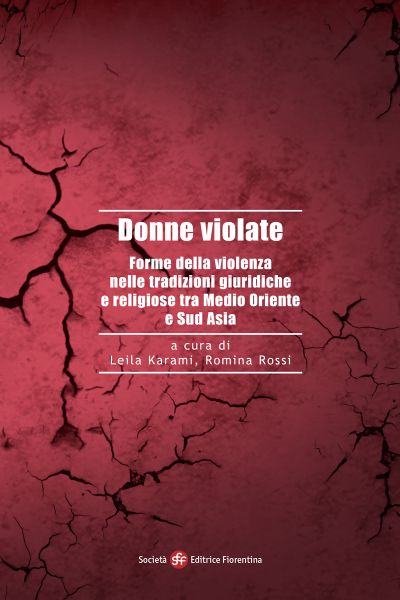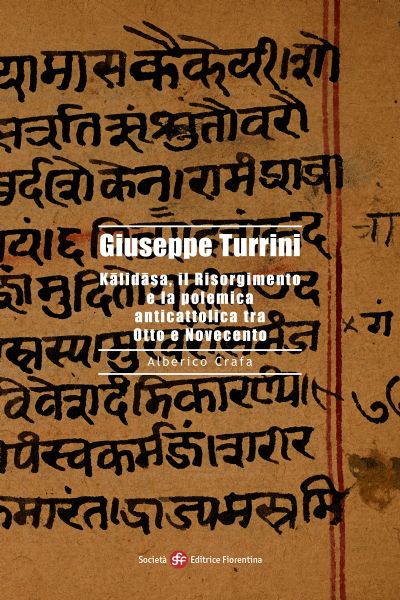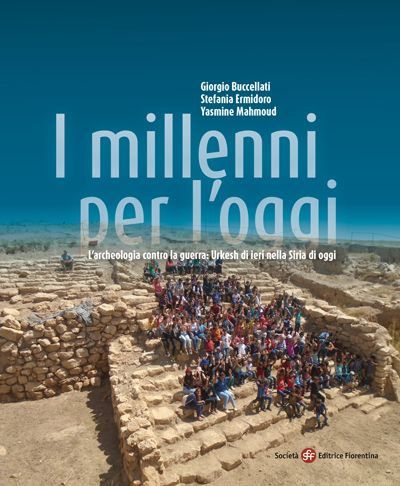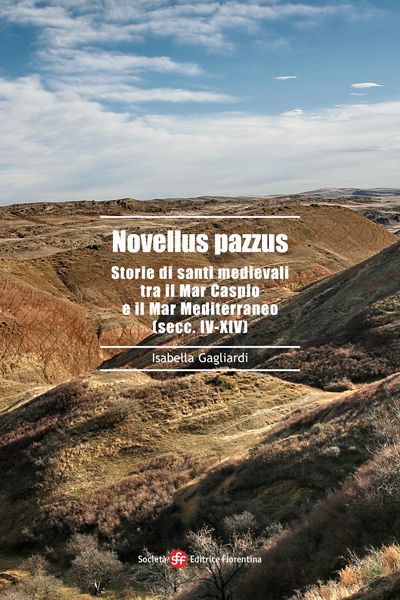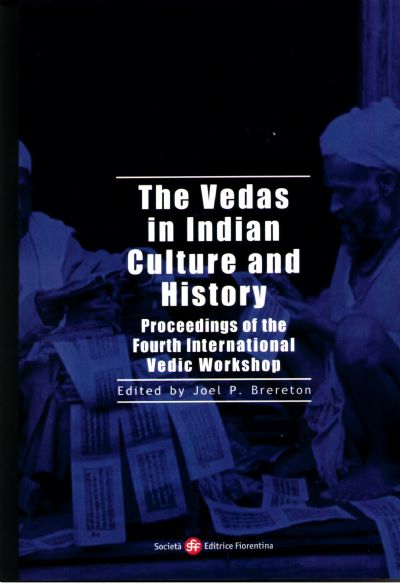
The Vedas in Indian Culture and History
Proceedings of the Fourth International Vedic Workshop
a cura di Joel P. Brereton
In his introduction to the Proceedings of the first Vedic Workshop (1997), Michael Witzel outlined some of the desiderata of Vedic Studies and discussed the contributions of the volume’s papers to developing new ways of exploring the Veda. His discussion made clear how much needs to be done and how much is being done. Many of the tasks he described remain: we still do not have a full critical edition and translation of the Paippalāda Saṃhitā or a complete translation of the Maitrāyaṇī Saṃhitā, the Kaṭha Saṃhitā, and the Jaiminīya Brāhmaṇa. We still need a comprehensive study of the Vedic verbal system. But progress has been made on a variety of fronts. The work on the Paippalāda Saṃhitā at Leiden has continued, and now we have new editions and translations of eight of its twenty books. Since Witzel wrote, detailed studies of aspects of the Vedic verbal system have appeared, which include, for example, books by Martin Kümmel on the perfect (2000), François Heenen on the desiderative (2006), Eystein Dahl on verbal tense and aspect (2010), and Leonid Kulikov on the ya-presents (2012). These and other significant works are establishing the foundation for a full presentation of the Vedic verbal system. There is a new English translation of the R̥gveda by Stephanie Jamison and Joel Brereton (2014), and we now have two volumes of a four-volume German translation under the editorship of Michael Witzel and Toshifumi Gotō (2007, 2013). While we still do not have a complete translation of the Maitrāyaṇī Saṃhitā, Kyoko Amano (2012) has given us a German translation of the prose sections of books I and II together with a valuable study of the language of the text. In addition, Thomas Oberlies (1998, 1999, 2012) has published substantial studies of R̥gvedic religion that not only consolidate a great deal of scholarship but also offer a distinctive interpretation of the R̥gveda. Even this very incomplete review of major publications in Vedic studies illustrates the substantial progress that has been made. The papers in this volume show the continuing effort to open up the Vedic corpus and to develop ways of connecting Vedic texts to the study of early Indian history, society, and culture.
Foundational to Vedic scholarship are studies of Vedic grammar and Vedic manuscripts. Among the essays in this volume, the four in Part I “Grammar and Text” deal with these basic issues. Eystein Dahl provides a good example of an analysis that both takes account of traditional scholarship and utilizes the insights of contemporary linguistic theory. His paper examines the use of the aorist and imperfect in early Vedic. Pāṇini, followed by many modern scholars, distinguishes between the imperfect indicative, which he understands to denote the remote past, and the aorist indicative, which denotes the recent past. But there are instan-ces in the R̥gveda, however, which do not show this distinction. Dahl considers verbal aspect as a means of explaining both the normal uses of the aorist and the imperfect and the exceptional cases that do not conform to this usage. The aorist indicative, he argues, has a past perfective character, while the imperfect has a past neutral character. Because it is past perfective, the aorist normally —but not inevitably— signals the immediate past, for the immediate past typically implies that a situation has been completed before the speech time. On the other hand, remote past contexts are semantically less marked because they imply only that there is significant interval between the event described and the speech time. The remote past has therefore generally, but again not necessarily, fallen into the sphere of the more neutral imperfect. The addition of aspect to the interpretation of the aorist and imperfect thus allows a more accurate description of their actual deployment in early Vedic. In his paper, Hans Hock looks at the historical development of the accentuation pattern of verbal prefixes. He shows that the accentuation pattern evolved during the Vedic period, from an early, partly pre-R̥gvedic stage, in which every prefix was accented, to a later stage, attested in the Śatapatha Brāhmaṇa and described by Pāṇini, in which the accent alternated between the verb and the immediately preceding prefix. Between these temporal boundaries, the R̥gveda itself and earlier Yajurvedic texts illustrate varieties of accent patterns that mark the movement from the earlier system to the later. The third paper is by Tamara Ditrich, who investigates the development of dvandva compounds in the R̥gveda. Ditrich’s analysis focuses on the two earliest types of dvandva compounds: that in which the constituents of the compound are both dual, accented, and declined, and that in which the constituents are dual and accented but only the last constituent is declined. Although there are exceptions, most compounds of these two kinds are devatādvandvas, theonyms invoking two closely related deities. Ditrich supports Stanley Insler’s argument that the constituents of such compounds should be viewed as separate words by pointing out that only these two early types of dvandvas are attested in tmesi and that when in tmesi, the devatādvandvas are not viewed as compounds either by the R̥gvedapadapāṭha or by Pāṇini. Implied in this analysis is that devatādvandvas are different from other kinds of dvandvas and that their special treatment reflects the power and significance of deities’ names for the Vedic poets. Lastly, Saraju Rath’s paper returns to the issue of Vedic accents, but her concern is the interpretation of the different systems of accentuation found in South Indian Grantha manuscripts. These manuscripts have been ignored by past scholars because their systems of accent notation developed late in the history of South Indian manuscripts (ca. early to mid-16th c.). However, South India has conserved ancient features of Vedic recitation that have disappeared or are rare elsewhere, so that even a late manuscript may provide evidence of early recitation.
The essays in Part II “Religion and Interpretation” build on such foundations and offer new interpretations of Vedic texts and new perspectives on Vedic religion. One of the traditions of scholarship on the early Veda has been to study the evidence of other Indo-European cultures in order to clarify the the background and development of R̥gvedic religious practices and deities. Henry John Walker applies this method, together with a careful reconsideration of Vedic evidence, to understand the nature of the Aśvins in the R̥gveda. As have earlier scholars, Walker argues that the Aśvins and the Greek Dioskouroi are reflexes of one another. One of the characteristics they share is that there are different traditions involving their status —whether or not they are fully gods— and about their parentage. Although both pairs are referred to as twins, there are a number of traditions regarding their paternity and maternity. In the case of the Aśvins, one R̥gvedic verse attributes a divided paternity to them, and a mantra quoted by Yāska gives them a divided maternity. As a result of his examination of such traditions, Walker shows that simple formulations that offer a uniform description of the origin and meaning of twins in pre-modern societies have little to re-
commend them in the face of the complexity of ancient evidence. A second essay that also looks at the origins of a divinity is Madhavi Kolhatkar’s study of the Vedic origins of the goddess Lakṣmī. She argues that Lakṣmī’s name ultimately derives from lákṣman, a “mark,” and more especially, a mark on a cow or other animal that identifies its owner. The goddess Lakṣmī, she concludes, was originally such a marked animal, which later became anthropomorphized and deified.
The papers of Madayo Kahle and Julia Mendoza Tuñón, also are concerned with Vedic origins, but in these, the focus is the development of Vedic concepts of the journey of the dead to heaven. Kahle’s study examines two ways to heaven described in R̥gvedic funeral hymns. In one, the deceased rejoins his body, transformed and transported by the cremation fire, in heaven. The other way describes the transition of the ásu, the “life,” to heaven. In addition to exploring the differences in these two ways, Kahle’s essay links them to the development of the two “paths” of later Vedic tradition, the devayāna, the “path of the gods,” and pitr̥yāṇa, the “path of the ancestors.” In her essay, Mendoza Tuñón investigates the way to immortality in three passages in the Jaiminīya Brāhmaṇa. The path passes through various units of time and culminates in liberation from time, which is represented by the largest unit of time, the year. Such a journey has parallels in other cultures. A similar path described in the Zoroastrian Hadōxt Nask suggests that the Indian and Iranian eschatologies are descendants of a myth common to the two cultures. A comparable Orphic eschatology attests the influence of Indian descriptions of the path of the dead on the Greek tradition.
To these two studies of Indian eschatology, Joel Brereton adds a third, a close study of R̥V 10.56. Although this hymn has often been taken as a eulogy for a dead horse, Brereton argues that it is actually a funeral hymn for a person. The first half of the hymn is dominated by the image of Agni as the horse that transports the body of the deceased to heaven. The second half describes the continued life of the deceased both in heaven and, through his descendants, on earth. Like Brereton, Mislav Ježić also closely examines one Vedic text, but his text is the late Vedic Īśā Upaniṣad. This Upaniṣad has been transmitted in two recensions. By comparing them and parallel passages in other Upaniṣads, Ježić offers a reconstruction of the history of the text, a description of its compositional techniques, and an analysis of its intertextual relations. Such observations on the inner workings of the text also contribute to a clearer exegesis of the Upaniṣad.
The papers in Part III “Ritual, History, and Society” show how study of texts can lead to broader observations about the intersections of Vedic ritual and Vedic social roles and about the early history of India. In her essay, Stephanie Jamison builds on her earlier observation that the wife of the sacrificer was brought into the Vedic sacrifice during the late R̥gvedic period. The focus of her essay is R̥V 10.109, which, she argues, deals with anxieties attendant upon the introduction of the patnī into the solemn ritual. The principal problem for the ritualists was that bringing the wife of the sacrificer into the sacrifice separates her from her normal social identity as a wife and mother. At least during the time of the rite, she becomes the possession of the gods and risks being completely lost to her husband and family. This hymn reflects the attempt to ensure her return into the human world and into her normal social roles. Jamison notes that later exegetes of the hymn miss its point partly because their interpretations reflect the ritual and social conditions of their times. Her essay thus illustrates the need to consider the historical context of both text and commentary in using the latter to understand R̥gvedic hymns. In his essay, Jarrod Whitaker studies the term indriyá in order to show how R̥gvedic ritual shaped the ideals R̥gvedic rulers were expected to embody. The word indriyá denotes the “Indrahood” of Indra, his unique powers and traits as a warrior, which he attained through the ritual. But humans can also aspire to such characteristics and can also gain them by the ritual. The ritual thus defines a warrior ideal and enables men to possess the power to act according to that ideal. In this way, the ritual has a direct influence in defining social roles. In his essay, Shingo Einoo looks at reflections of societal change in the rites for rain in Vedic and post-Vedic literature. While there are many rites for the control of the rain in Vedic literature, there are fewer in the texts compiled after the Veda. Later texts show rather an increasing number of rites for consecrating water reservoirs. This change reflects a technological and economic shift: the advancing ability to build water tanks and the increasing dependence on them. It also reflects a religious one: the development of rites that carried less risk of failure and therefore less risk of compromising the status and reputation of the brahman priests who performed them.
The last two essays of the third section also illustrate the effort to understand social history embedded in Vedic texts. T.P. Mahadevan provides a detailed and nuanced study of the development of gotras, brahman lineages that trace lines of descent from r̥ṣi composers of the R̥gveda. These brahmanical gotras arose from the poets who created the R̥gvedic hymns and from their descendants who preserved and transmitted the Vedic oral tradition. Indeed, the enactment of these lines of descent in pravara ceremonies replicates the oral transmission of the Veda. The oral tradition was thus instrumental in creating the brahman caste, which is comprised of these brahmanical gotras, and perhaps, Mahadevan suggests, they were instrumental in creating the caste system itself. The last article in this section is by Frits Staal. He looks back at the very earliest history of the Vedic peoples and at the formation of one of the distinctive elements of Vedic culture, its emphasis on knowledge and speech. He approaches this topic by studying the rathakāra, the “chariot-maker.” Even though the chariot is one of the distinctive cultural elements of the Vedic tradition, there is no evidence that chariot-makers or their ancestors entered South Asia by chariot. Rather, the chariot existed in the minds of chariot-makers. Such specialized and valuable knowledge was one source of the strength of the Vedic peoples, for whom the possession of such knowledge carried social and religious prestige. Staal’s emphasis on the power of knowledge and of words in explaining the cultural dominance of the Indo-Aryans thus stands in contrast to Whitaker’s analysis, which emphasizes the cult of the warrior. The two articles suggest a tension that further scholarship might usefully explore in understanding how and why the Indo-Aryan peoples came to dominate Indian culture.
Partly as a reflection of the on-going preparation of a critical text of the Paippalāda recension of the Atharvaveda, there has been a renewed interest in the Atharvaveda and the Atharvavedic tradition more generally. The three papers in Part IV “Atharvaveda Studies” advance this effort. The essay by Elizabeth Tucker is a close study of two Paippalāda hymns that have no equivalents in the Śaunaka tradition, AVP 11.10 and 11. The two hymns concern a harvest rite, and their focus is the indrarāśi “the heap of Indra,” also called “the big-bellied (mahodara) heap of Indra.” This “heap of Indra” designates a particular portion of grain reserved for brahmans and dangerous for anyone but brahmans. These hymns probably reflect a custom of making an offering to brahmans that removed evil from the harvest and thus brought prosperity to the people. That purpose connects this Atharvavedic rite with later rituals, in which brahmans absorb and thereby eliminate what is inauspicious. The second Atharvavedic study is Julieta Rotaru’s analysis of the application and interpretation of the Atharvavedic pratīka “brahma jajñānam,” “the bráhman that was born.” This phrase serves as the pratīka for two different hymns, AVŚ 4.1 and 5.6, which share the same opening verse. Rotaru’s study examines the Kauśika Sūtra to determine when it uses the pratīka to indicate just the verse and when a whole hymn. And if it indicates a whole hymn, then how —and whether— the Sūtra makes it possible to distinguish which of the two hymns it intends. Her study also examines the various strategies commentaries and later texts use to indicate which hymn they intend by the pratīka. Finally, Michael Witzel reviews the manuscript traditions of the Śaunaka Atharvaveda from the 15th to the 20th centuries to study the copyists, patrons, and families by whom these manuscripts were created and through whom they were transmitted. His study reveals the thin line of transmission of both the oral and the written traditions of the Śaunaka Atharvaveda and the interaction between the two traditions. This fragile transmission helps explain the number of mistakes that occurred and that were perpetuated in both manuscripts and oral recitation of the Atharvaveda. His study alerts scholars to be wary of taking too seriously deviant forms in the Śaunaka traditions, since these may reflect Gujarati peculiarities of script or pronunciation or simply errors in transmission. He further argues that his review shows that not only do we need a critical edition of the Paippalāda recension, but we also need a new edition of the Śaunaka recension, one which more thoroughly documents and examines the oral and manuscript traditions.
In the last part of this collection, Part V “The Continuing Life of the Veda,” seven papers carry the discussion of the Veda into the period after its composition. Two of these papers study the relation of the Veda to Buddhism. Karen Muldoon-Hules discusses the reflection of Vedic marital customs in the stories of the Buddhist avadāna literature. The orthodox dharma tradition set marriage as the only desirable option for women, a prescription that left no room for the Buddhist ideal of a celibate life. Two avadāna stories subversively use the Vedic tradition of svayaṃvara, a bride’s “self-choice” of a husband, to justify two women’s entry into monastic life by becoming “brides of the Buddha.” The paper demonstrates both the continuing power of the Vedic tradition and the ability to apply it against brahmanical interpreters who claimed sole authority over it. In his essay, Shrikant Bahulkar demonstrates the continuing influence of Vedic traditions in Buddhist Tantra. Tantric texts show ritual customs, elements, and terminology that derive from Vedic and brahmanical usage. Thus, the Tantras use mantras, including sounds such as om̐, svāhā, and vauṣaṭ, which come directly from Vedic recitation. Similarly, tantric ritual uses sacrificial utensils and ritual practices that derive from Vedic ritual. However, the Tantras employ Vedic terms in a distinctively Buddhist tantric sense, and they adapt Vedic practices to a tantric context. His study demonstrates that Buddhists had knowledge of the Vedic tradition generally, although not of Vedic texts, and it attests to medieval India’s familiarity with Vedic practices, even if the Veda itself remained the possession of ritual specialists. Such general familiarity with the Veda is also apparent in other literature.
The next two papers look at the life of the Veda in later Sanskrit literature. In his study, Alf Hiltebeitel examines allusions to the Veda in the Mahābhārata. His focus is the story of Vyāsa’s sexual union with the two princesses, Ambikā and Ambālikā. Hiltebeitel argues that this narrative alludes to the episode in the Aśvamedha in which the mahiṣī or chief queen lies with the sacrificial horse. He supports this interpretation by showing similar oblique references to the rites of the Aśvamedha in the Mahābhārata and in the Rāmāyaṇa. While Vedic rites such as the Rājasūya or the Aśvamedha may have been rarely performed in the period of the epics’ composition, these rituals were sufficiently familiar that epic poets could make knowing allusion to them to give greater depth to their narratives. Federico Squarcini examines how the application of the term vaidika in the Mānavadharmaśāstra reflects the historical and cultural context of the text. At the time of the Mānavadharmaśāstra, brahmans’ claim to social and religious primacy was under challenge by other religious groups, especially Buddhists. In order to help brahmans regain their status, Manu urged them to adhere to “Vedic” norms and by thus clothing themselves in the Veda, to rest their claim to social and religious privilege on the Veda. Manu defined “Vedic” to include a broad range of acts and beliefs understood to rest on the authority of the Veda. Thus for him, living according to the Veda meant to trust in the ritual efficacy of Vedic rites, to accept Vedic teachings about the consequences of certain beliefs and actions, to study the Veda, to act according to what Manu understood to be its restrictions and prescriptions, and to identify with a specific brahmanical lineage connected to Vedic study. In that way, Manu envisioned the Veda as defining brahmanical life and with it brahmanical prestige.
Bringing us into the early modern period, Madhav Deshpande examines a dispute in 18th- and 19th-century Maharashtra that concerned the right of Yajurvedic priests to perform the functions of a Hotar. The Taittirīya Saṃhitā contains Hautra mantras for non-soma sacrifices, and therefore the Taittirīyakas claimed that in such rites a Taittirīyaka Yajurvedin could act as Hotar, a role typically belonging to a R̥gvedin. R̥gvedins argued that they alone should perform the office of Hotar in all rites. Deshpande documents the arguments, counter-arguments, and even clashes that surrounded this conflict between Yajurvedins and R̥gvedins. He also notes that this dispute had obvious economic consequences, since exclusion from all but soma rites would have caused severe economic loss for R̥gvedic communities.
The last two papers of this part concern the life of the Veda in contemporary India. In her essay, Laurie Patton discusses the motivations of women to study the Veda and the social acceptance of their study. Based on interviews of women in Pune and Chennai, her paper describes significant differences in attitude and practice concerning Vedic study by women in the two cities. In Pune, most women studying Sanskrit studied Vedic, although few of them participated in priestly recitation. In Chennai, where approximately 50% of the women Sanskrit scholars were non-brahmans, most of the women studied aesthetics. None studied the Veda itself. Patton points out that Pune has thus preserved a brahman lineage in which women can study the Veda, while Chennai has more thoroughly challenged brahman exclusivism in Sanskrit study but removed Vedic study from the areas pursued by women. Patton’s paper documents the already significant role of women in continuing the traditions of Sanskrit learning, including the traditions of Vedic study. David Knipe’s paper is also based on fieldwork. Since 1980, Knipe has conducted interviews with several generations of pandit families in one area of Andhra Pradesh. One of the topics he has pursued with them has been their reflections on growing old. In this contribution, he discusses their attitudes regarding the inevitablity of illness, their methods of prolonging life, and their performance of the agnihotra and its significance for them. Although his paper concerns old age and death, it is also about how traditional families live the Veda and define their lives according to the Veda.
Overall, therefore, these papers show scholars’ efforts to move Vedic studies away from the description of Vedic ritual and Vedic religion as a self-contained system and toward showing how the Veda reflects and forms social and political organization. They also present a more nuanced analysis of the dynamics of the Vedic period. Rather than freezing the early history of Indian religion into discreet categories of early, middle, late, and post-Veda, scholars show an increasing effort to understand the histories within each of these periods and the continuities among them. And finally and most importantly, these papers demonstrate the enduring vitality of both the Vedic tradition and Vedic study.
libro
Prezzo € 58.00
pp. 510
Formato 16x24
Anno 2016
ISBN 9788860323866
Collana: Alti Studi di Storia intellettuale e delle Religioni


